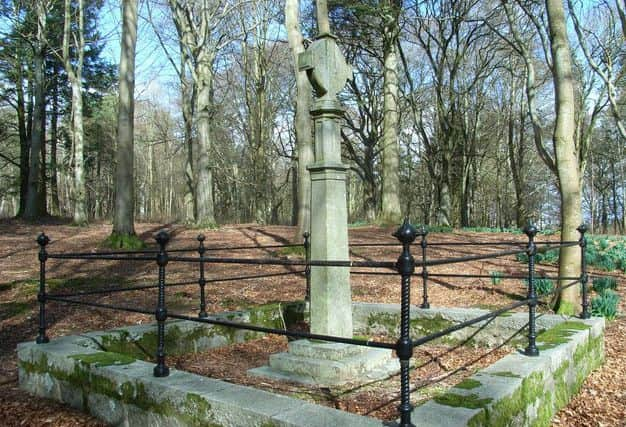Mystery of body snatching solved by message in bottle


Alexander, 25th Earl of Crawford, was stolen from his triple coffin laid deep in the family tomb at Dunecht House in Aberdeenshire, with a local rat catcher put on trial for grave robbing in 1881.
The brisk trade in corpses to meet the shortfall in legal supply of cadavers to medical schools is a well-documented element of the early 19th Century criminal underworld.
Advertisement
Hide AdAdvertisement
Hide AdBut the case of the Earl of Crawford created an “immediate press sensation” according to Daniel MacCannell’s Lost Deeside, with the peer missing for some 14 months.


In Deeside, the kirkyard of Banchory-Devenick was particularly defended against the “resurrectionists” with a watch-house built for relatives to guard the final resting place of their loved ones - possibly with firearms - until such a time the body would be no use for medical purposes.
According to MacCannell, the parishes of Peterculter, Maryculter, Drumoack, Durris, Skene, Lumphanan and Coull were all targets for those seeking bodies to sell for anatomical dissection.
The family of the Earl of Crawford, who owned one of the finest homes in the area, were to be included on the victim’s list. Almost a year following the Earl’s death, the family solicitor received a note.


It said: “The remains of the late Earl of Crawford are not beneath the chaple (sic) at Dunecht as you believe, but were removed hence last spring, and the smell of decayed flowers ascending from the vault since that time will, on investigation, be found to proceed from another cause than flowers.”
The note was signed ‘Nabob’.
After a search of the tomb, the disappearance of the Earl was confirmed by his family. Bloodhounds were unleashed to search for the missing noble and a reward of £600 was put up for information.
What is perhaps remarkable is the level of fortification the thieves had to get through to take the deceased, whose son was the revered astronomer Lord Lindsay.
Advertisement
Hide AdAdvertisement
Hide AdThe earl, an art expert whose embalmed body was returned to Scotland following his death in Florence, was buried in not one but three coffins. The inner casket was made of soft Italian wood and the middle one of lead. The outer coffin was made of polished oak with silver fittings. The three coffins were deposited within a huge walnut shell, according to MacCannell.
Four gigantic slabs of Caithness granite - each six feet by four feet - covered the crypt with earth and plants layered on top.
On inspection, nothing was stolen from the richly decorated crypt but the Earl himself.
The family and local law enforcement were clueless as to those responsible.
Nabob wrote again. He said thaat, while he had not been party to the crime himself, he was certain the body had not left Aberdeenshire.
Five months later and Nabob was revealed to be Charles Souter, a former rat catcher at Dunecht House, who had been dismissed from his job by the Earl for poaching.
He claimed that, while out poaching, he had seen two men with ‘commonplace’ Aberdeenshire accents and wearing masks stealing the Earl’s body.
Advertisement
Hide AdAdvertisement
Hide AdSouter was put on trial and sentenced to five years of penal servitude with the court’s opinion that at least two accomplices would be required to move the earl. They were never found but Souter’s evidence let to the discovery of the earl, around 500 yards from him hom.
Intriguingly, a message in a bottle claiming to be from one of the thieves washed up on the beach at Trondra, Shetland Isles, two years after the robbery.
The account is contained in Messages from the Sea, a new book which charts messages in bottles found around the world.
The note, on a torn piece of paper, said: “This bottle was thrown into the water at Stirling, in the river Forth, on the 15th July 1882, by one of the men who were concerned in the lifting of the body of the Earl of Crawford.
The body is now, I think, rotted into clay. We lifted it with the intention of selling it, but it was published so soon that we buried it to get it out of the way.”
The remains of the Earl were reburied hundreds of miles away at a family tomb in Wigan.
A monument stands close to Dunecht House where the Earl’s body was found.